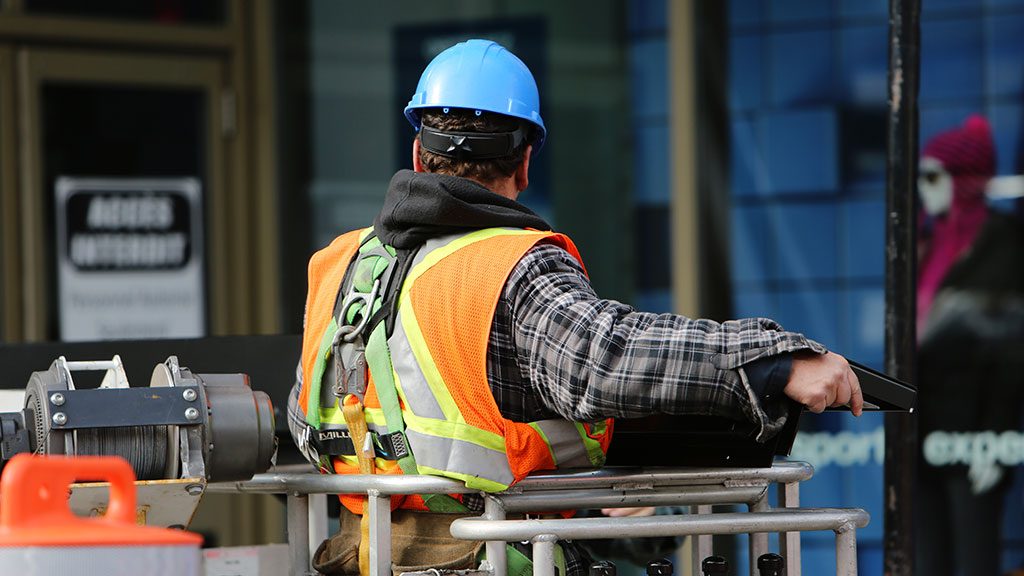A new study reveals evidence that increasing worker participation in the development of safety protocols reduces injury rates and imparts five important steps on how to get buy-in for a better safety culture.
The report, Building a High Participation Safety Culture, is a follow up to a survey conducted by eCompliance that revealed 98 per cent of safety leaders believe improving participation will improve safety performance.
“If you have very high levels of participation, you see a dramatic decrease in incident rates and improvement in outcomes. Really the question for us is, why is that?” stated Josh LeBrun, president and COO of eCompliance, a safety software company.
“The study found that there are five things in a particular order that companies did to drive very high levels of participation. Those five things, if done in order and if done successfully, allow the company to drive a high participation safety culture.”
The five steps to building that culture include CEO commitment, rise of the safety leader, employee buy-in, safety reflex and safety velocity.
“We found that CEO commitment is the number one thing. It’s the linchpin,” said LeBrun, adding 40 organizations were interviewed for the study, 28 per cent of those belonging to the construction sector. “Companies that had CEO commitment had an opportunity to create a high participation safety culture. If you don’t have CEO commitment, it’s very difficult to get to that.”
The second step is for the CEO to demonstrate that commitment by publicly stating safety is a priority and by appointing a safety champion. The report refers to this step as rise of the safety leader.
“The rise of the safety leader is not done by giving them a big budget or giving them a large team, it’s done by a public acknowledgement by the CEO to say ‘this person has credibility in the organization and they’re going to drive change within the company. I’m not only supportive of it, but I’m actually driving it too,’ ” LeBrun explained. “If the safety leader doesn’t have that credibility it’s very hard for them to execute on the change management required in order to drive a high participation safety culture.”
Once the safety leader has that power for change management within the organization, they have an opportunity to drive employee buy-in, the third step in the process.
“You can’t drive participation unless the employees are buying into that new norm, that new belief system around safety and that can be very challenging,” said LeBrun.
“There are a couple ways in which companies were able to drive that belief system. Oftentimes what we saw was that companies were able to create some sort of program internally that positively branded safety.”
Making economic arguments about why undertaking more activities related to safety is going to benefit the employees and the company is also useful, LeBrun said, adding job security, in particular, appeals to groups resistant to change such as the older generation.
“We’re recognizing across the industry that safety actually drives positive income statement outcomes for the company or positive growth for the company,” said LeBrun.
Step four is safety reflex. Once you have buy-in, employees will begin to identify hazards and look for ways to actively mitigate risk, but the company has to be ready to respond.
“It’s critical to have that really fast reflex and respond quickly to the employees identifying these types of hazards by actually executing corrective actions and relaying that information back to the employees,” said LeBrun, adding the safety team could be overwhelmed with all the new reporting.
“If you don’t do that well you can lose all the momentum that you gained. For example, if an employee has identified a particular hazard and nobody does anything about it, the employee will stop identifying any sort of hazards because they don’t feel like it’s a good use of their time.”
After proving the safety team can move quickly and triage the risk that’s coming in, it’s time for the final step, safety velocity, which means scaling the initiatives and drive for participation, LeBrun said.
“What we find in these high participation safety cultures is safety is everyone, every day, so at step five you are now building a situation in which everybody is engaged in safety on a daily basis,” said LeBrun.










Recent Comments